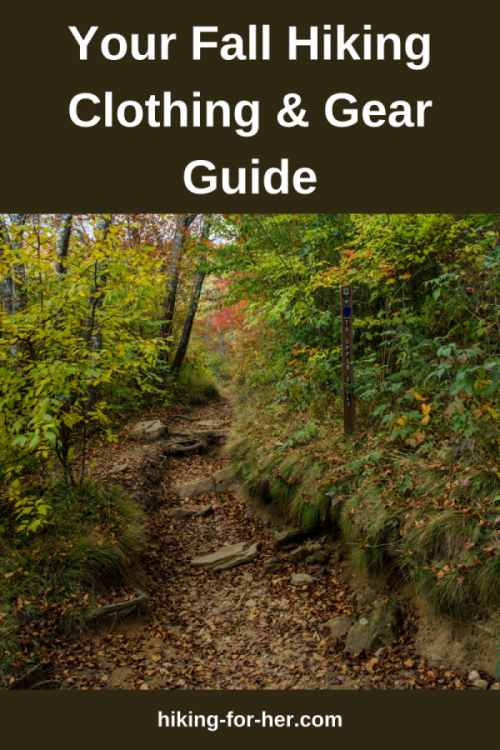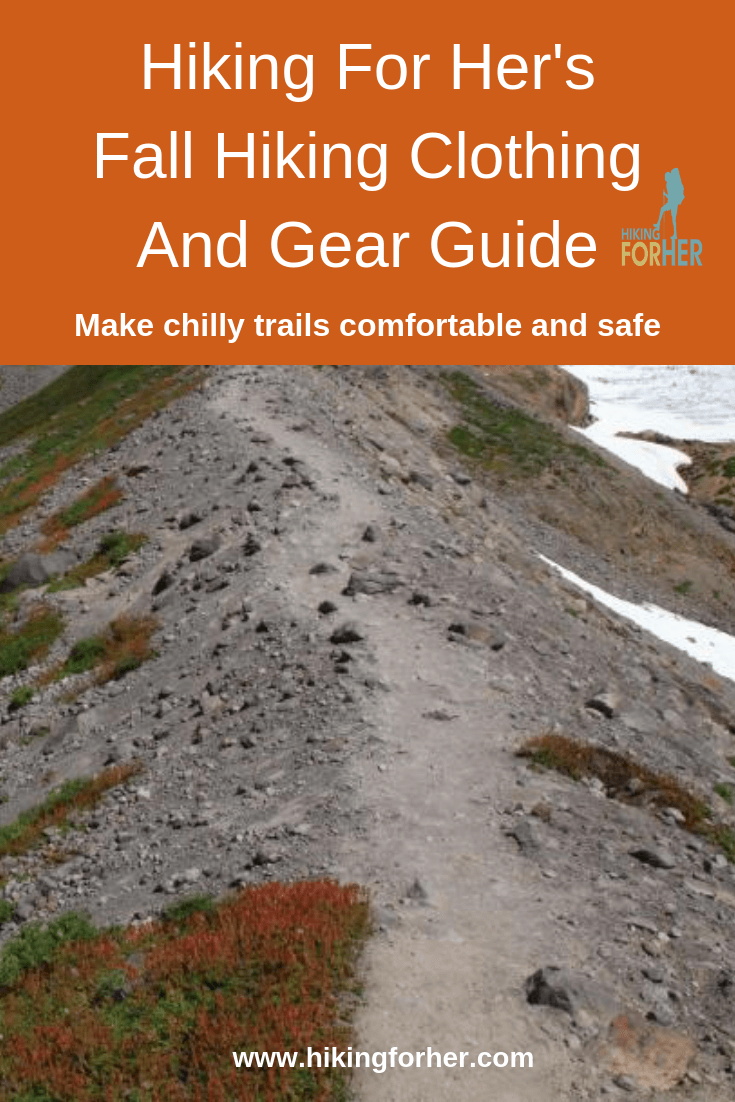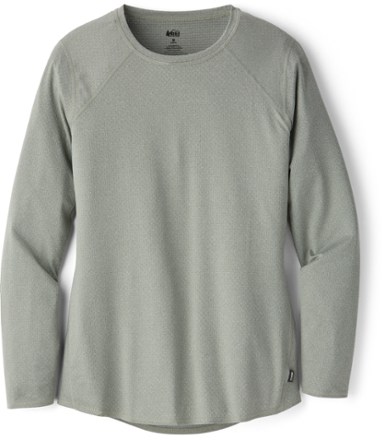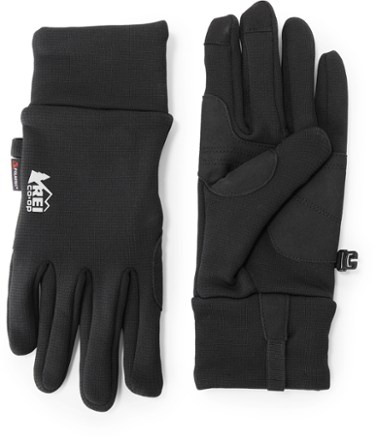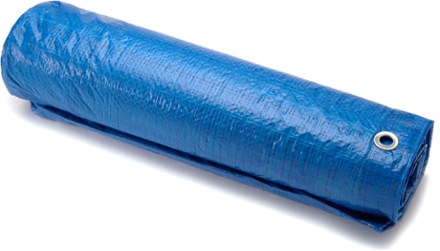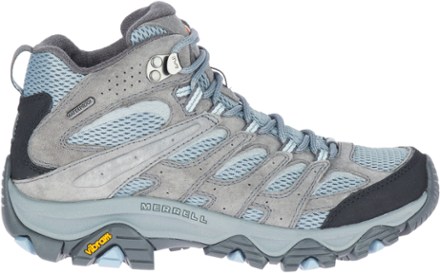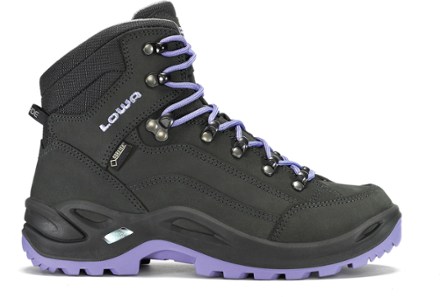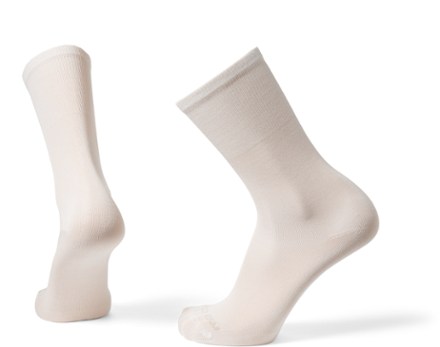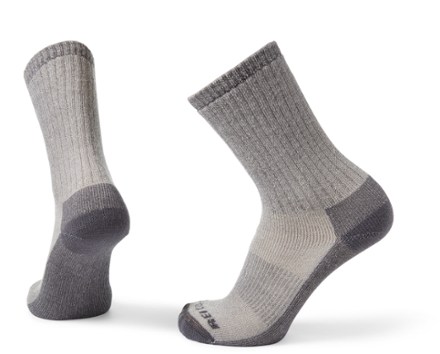
Best Fall Hiking
Clothing And Gear Guide
For Female Hikers
By Diane Spicer
If you're reading this fall hiking clothing and gear guide, it must be getting close to October in the Northern hemisphere!
And you're wondering what to wear hiking in fall.
You're in the right place.
These tips will help you choose the best hiking clothes and trustworthy hiking gear so you stay warm, dry and comfortable on day hikes and backpacking trips through the changing autumn weather.
There are plenty of hiking opportunities left on autumn trails, and guess what!
You might have all of the glory (mostly) to yourself, as people's thoughts turn to football, baking, and pumpkin spice everything.
Not (yet) a fall hiker?
I urge you to extend your summer hiking season by a month or two with this updated cool weather guide for women's outdoor clothing and gear.
- And if you hike in a climate with mild winters, maybe even longer!
Jump ahead with these fall hiking clothing recommendations:
More ways to use this fall hiking clothing and gear guide:
- Gear up to tackle chilly spring time trails: hello Southern hemisphere in October!
- Or for three season car camping.
Keep it handy!
Here's what we cover in this
fall hiking clothing and gear guide
This guide takes you through both components of safe fall hiking.
Outdoor clothing for chilly weather:
- the art of dressing in layers
- base layer recommendations
- why a mid layer matters in the fall
- tights versus leggings as a base layer
- head coverage
- finger warmth
- good choices for outer layers
- rain pants options
Hiking gear for safe fall hiking:
- fast emergency shelter choices
- illuminating picks for dark days
- hydration solutions
- dry sitting options
- best backpacks for soggy hiking
- footwear choices for wet trails
- best hiking socks
Maybe you should bookmark this page and come back several times. Bring a pumpkin spice latte next time ;)
Here's the scoop right up front
It's going to take awhile to cover all of the many ways you can keep yourself warm, dry and smiling on a chilly, damp hiking trail.
But in reality, you need this fall hiking clothing and gear guide for only three reasons:
- Dressing in layers guarantees optimal comfort during fall hiking, but you might need a few hints on how to choose the best pieces for your layering system.
- Adding a few low cost items to your ten essentials list for comfort and safety is easy if you know how - without adding a lot of weight to your backpack (or breaking your budget).
- Trail footwear that served you well on warm, dry summer days? Hang it up until next year and turn your attention to good choices for safety and comfort on wet, muddy autumn trails.
Hiking For Her is a proud affiliate of REI Co-op, meaning the links and images on this page take you to their hiking clothing and gear.
They've been in the outdoor clothing and gear biz for a long time, and I trust them to deliver the quality goods for myself, and for you.
- You pay nothing extra when you purchase using the links.
- Hiking For Her receives a small commission.
- Read more about REI Co-op member benefits here.
A note about sizing
If you'd like fall hiking clothing recommendations which focus on plus sizes for women hikers, read this:
Or try Alpine Parrot, designed for women who want great sizing for outdoor gear, without resorting to men's clothing.
And many of the options in this fall hiking clothing guide are available in sizes 1X - 3X.
Now let's get you geared up for some great fall hiking!
Fall hiking clothing and gear guide:
the art of dressing in layers
Sure, you can grab a mid weight hoodie from your workout gym bag.
Or dig through the clothes pile on that chair next to your bed (just me?) to snag a long sleeve shirt before you head out to the trail.
But a smart hiker facing cool, unpredictable weather (that's you!) makes very deliberate choices about fabric, weight and design in order to maximize the chances of a safe, enjoyable hike.
Let's start with the basics: your best base layer choices.
Your base layer should be moisture wicking
Don't include your sports bra and underwear in what hikers call your base layer.
- Maybe those are the sub basement layer??
Instead, think about what nestles right on your skin, on top of your trail worthy undergarments.
You want that layer to feel good, but it must work hard for you as you work up a sweat in cool temperatures.
- Fall hiking's paradox: warm while you walk, chilled and damp when you stop.
So a long sleeve top with a relaxed neckline is an ideal choice for your moisture wicking base layer, if it's made of the right material.
This REI Co-op Lightweight Base Layer Crew Top is a great choice:
Here's another great base layer choice in a different fabric:
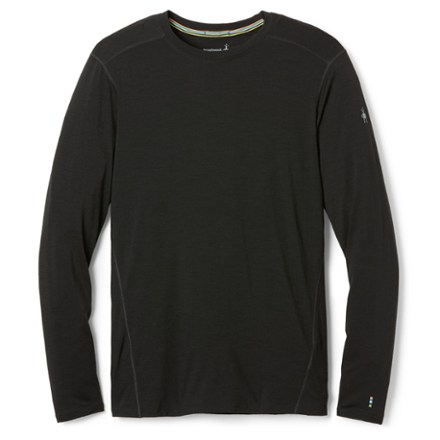 Smartwool Classic All-Season Merino Long-Sleeve Base Layer Top Smartwool Classic All-Season Merino Long-Sleeve Base Layer Top
|
Wick moisture and regulate your temperature on fall hikes. And then re-purpose the shirt as a single layer for summer backpacking mornings and evenings. |
Your middle layer should whisk sweat
but not heat away from your body
Fall hiking weather can be tricky.
A day can start out dry and fairly warm, and then turn on the water spigot.
Or the opposite scenario can play out: you dress appropriately for a cool rainy day but half way through the hike you're cooking under bright sunshine from your body heat trapped in your hiking clothes.
Either way, here's the solution to being sweaty but wanting to stay warm:
- Choose fall hiking clothing that allows you to uncover and cover as many times as needed during one hike.
A versatile choice for a midlayer to layer over your long sleeve shirt base layer is a zippered hiking vest.
- Read the trail logic here.
You can go a few different ways with vests.
Your first smart move would be to invest in a super lightweight but insulating down vest, like this high quality one from a trusted company:
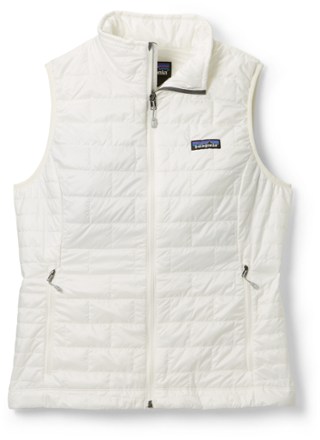
Why?
Because it will serve you well year round, and ride along with a small, light footprint in the bottom of your backpack when not needed.
It is a delightful mid layer on chilly trails. You can literally feel your body heat being recirculated back to your torso!
And if the day warms a bit and the wind kicks up (a likely fall scenario), it's a great windproof outer layer with roomy pockets.
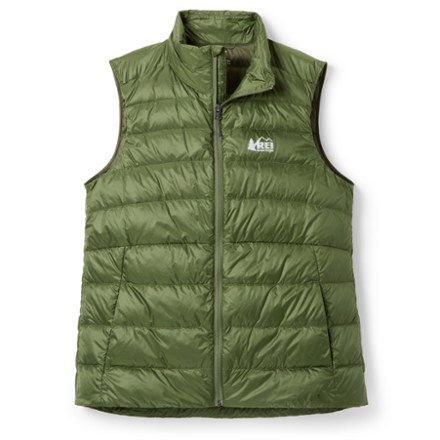 REI Co-op 650 Down Vest REI Co-op 650 Down Vest
|
Your second vest option for torso warming is also pretty spiffy. This REI Co-op Women's Down Vest has 650-fill-power down, which is lightweight and so very warm. It packs into its own pocket, for easy stowing in your backpack. The tall, breeze repelling collar plus soft fabric against your skin treats your chin and neck right. It's available in sizes XS - XL, and 1X - 3X, in some great color choices. |
Heading into really cool, damp hiking weather?
Of course you are!
Chances are, all of that vigorous exercise will work up enough body heat to keep you comfortable, but some women end up shivering despite the rigors of the trail.
If this sounds like you, heed this advice:
A pair of leggings or tights as a base layer beneath your pants will keep your legs cozy - but give you plenty of flexibility and freedom of movement.
You can also sleep in a clean pair of these handy leg coverings if you're on an overnight or longer backpacking trip.
Take a look at some viable options for fall hiking layers.
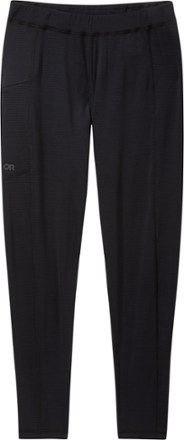
Outdoor Research Vigor Bottoms do all of these nice things for you on a chilly hike:
- Stretch and breathe with you
- Regulate your temperature
- Fit closely to make a great base layer
Care tip:
Keep your leggings and tights from wearing out too quickly by line drying them.
The heat of the dryer will encourage them to lose their shape.
- Baggy leggings are not a good trail fashion statement
- Plus, annoying!
Are you always the coldest one on the trail?
You need thicker tights, like these.
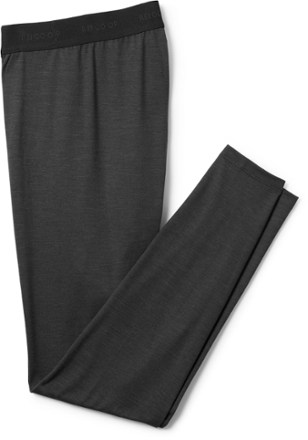
|
REI Co-op Midweight Base Layer Tights:
|
Not into tights?
You have options for a bottom base layer!
Read my review of prAna Pillar 7/8 leggings.
Or see all of your prAna choices here.
You can also stride down the trail in a hiking skirt.
- Check out the many worthy hiking skirt options for fall hiking trails.
Fall hiking clothing and gear guide:
Coverage for your heat emitting head
Never underestimate the value of a warm hat for your safety and well being on fall hikes.
This tip is so important that you might want to add these nearly weightless but priceless items to your hiking ten essentials, and carry them year round.
- Small investment of money yields a large payoff for your comfort and safety
- Smart hiking: it's the Hiking For Her way :)
Here are two good lightweight hiking hats to stash in your backpack.
|
This REI Co-op Fleece Beanie is a close fitting head cover to keep your body heat locked down. Too cute to use it just for trail days! And so lightweight that you'll forget it's in your backpack after a long, hot summer - but dig for it anyway when fall drizzle greets you. |
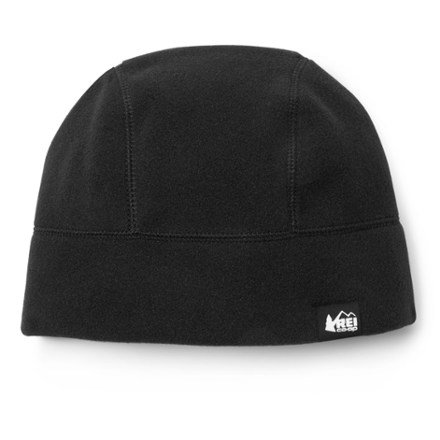
|
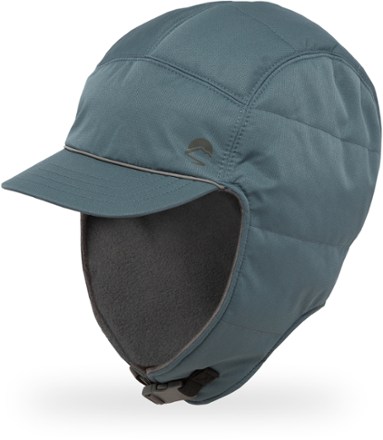 Sunday Afternoons Alpine Quilted Trapper Hat Sunday Afternoons Alpine Quilted Trapper Hat
|
This flaps down hat provides a bit more coverage for neck and ears. The brim will keep precipitation and rays out of your eyes. Time to be cozy! |
Never forget coverage for your fingers
Cold hands are a miserable reality on some fall hikes, especially when you're trying to grip your trekking poles.
So carry at least one pair of weatherproof gloves with you on fall hiking trails.
- Two pairs, even better, so you can switch them out when they get damp from your sweat.
Here's the bad news:
Hiking gloves come in an entire universe of choices.
So let's make this easy on you.
Here's the pair that earns a place in this fall hiking clothing and gear guide: REI Co-op Polartec Wind Pro Fleece Gloves 2.0.
Why these gloves?
Now it's time to get serious about repelling wind and rain from your body in this fall hiking clothing and gear guide.
Outer layers for fall hiking
perform 3 major jobs
Your jacket and pants are your outer layers.
These items of outdoor clothing have 3 duties:
- provide ventilation options, similar to mid layers
- protect your skin from moisture and temperature changes
- provide room for all of your other layers, so your movements are not restricted
You may feel overwhelmed by all of the choices you face.
That's why this fall hiking clothing and gear guide includes recommendations that are trail approved for you!
Look for coziness
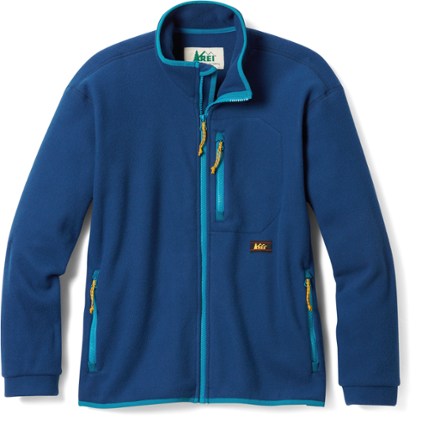 REI Co-op Trailsmith Fleece Jacket REI Co-op Trailsmith Fleece Jacket
|
You've gotta love fleece for its ability to insulate your body while keeping moisture and wind at bay. Fleece can stand up to moderate amounts of drizzle and still keep you warm, perfect for fall hiking weather. Or wear this one under your rain shell for extra layering. Tip: Hip length is the right length for wearing under your backpack. |
Also look for venting options in a hiking jacket
Look for chest vents (diagonal small zippers you can open and close as needed) and/or pit zips (yup, right where you'd expect from the name).
Inexpensive hiking clothing usually does not have the added feature of venting options, so if you're a beginner hiker doing fall hikes you might have to work with your mid layers to keep yourself temperature regulated.
Or take a look at this REI jacket which delivers a lot of features for full on rain protection without breaking the bank:
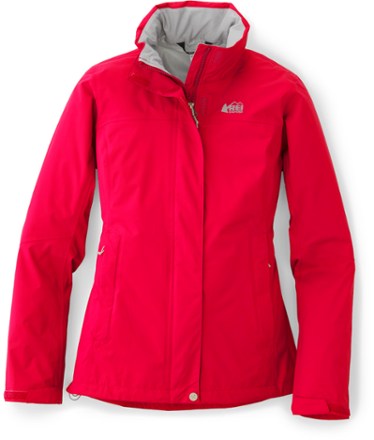
|
REI Co-op Rainier Women's Rain Jacket:
|
Trail tips:
- Adjust the drawcord hem and cuffs for additional ventilation or weather protection
- Stow the hood in the neckline when not needed
What about women's hiking pants for fall trails?
You want moisture repellent pants as an outer layer for fall hikes, for so many reasons:
- early morning or late afternoon dew laden vegetation along the trail
- unexpected rain showers
- creek crossings that don't go as planned
- sitting on wet logs or damp rocks during lunch
You get the idea!
Water repellency does not mean that all moisture will be kept away from your skin.
Instead, expect the fabric to dry quickly, and to provide some protection against skin chafing if it gets wet.
Here are two pairs to love:
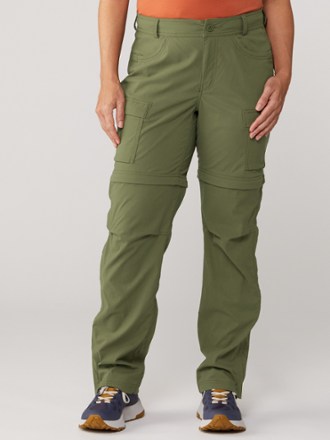
|
REI Co-op Sahara Convertible Pants for women in sizes XXS - 16, available in 3 lengths: versatile choice! Relaxed fit makes striding down a trail wearing leggings or tights underneath joyful rather than binding. Color coded zippers on lower legs make boot removal and sock adjustments easy. These are lightweight pants, perfect for dry but cool trails. Read why I wear them in my review here. |
Trail tip:
Convertible pants are great for the weeks in between summer and full on fall, when days may still be quite warm but skies can cloud up quickly.
Having pants that convert to shorts, and back again, give you the versatility you need to stay comfortable and protected when the weather forecasters tell you big fat lies optimistic stories.
Don't want to take a chance on getting wet from damp vegetation along the trail?
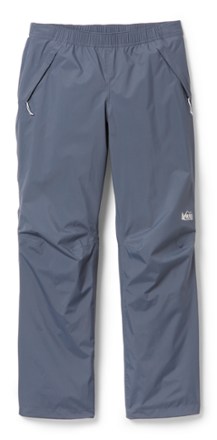 REI Co-op Rainier Full-Zip Rain Pants REI Co-op Rainier Full-Zip Rain Pants
|
Full zip seams, fully sealed for omitting moisture while allowing your heat and perspiration to vent - that's what you need for fall hiking.. Pull them over your leggings or tights, and you're all set. They have articulated knees so your movements won't be impeded by fabric. |
Do I really need rain pants?
Over the five decades I've been hiking, my answer has evolved to an emphatic YES with a caveat:
- You do need rain pants in your backpack if you're on a fall hike with a trail head more than a mile away from your destination.
So let's not mince words: you need rain pants.
Here's the link to the pair I wear, or just skip back up to the photo of the full zip pants.
Fall hiking clothing and gear guide:
let's get to the gear!
Which fall hiking gear do you need?
The hiking Ten Essentials are really clear on what to bring to keep yourself as comfortable as possible while remaining safe on a hike that goes sideways on you.
- Read this if you're not familiar with them
But consider them the bare essentials.
For less than ideal hiking conditions, or days when the weather forecast is a bit dodgy (which describes fall hiking, doesn't it!), you need to add some things to your pack.
- Just in case
- Just because
- Just 'cause I want you to be safe (the real reason)
That's why they're included in your fall hiking clothing and gear guide!
And I promise, it won't cost a lot.
Fast emergency shelter
A lightweight tarp can be used to sit on when there are no dry options but you need a rest break or a lunch spot.
- You can pitch it overhead for a rain shelter or rig a wind block when someone is injured or ill on the trail.
And a thin, almost weightless space blanket side (shiny reflective material) will trap your precious body heat if you have to spend the night out of doors.
Be the smartest hiker on the trail:
- Carry protection against elements + warmth for less than $20 U.S., with a lightweight tarp.
And I'm sure you can see how to use this tarp when car camping, or to provide a protected sitting spot during a picnic at the park.
I carry one in the car, too, because you just never know!
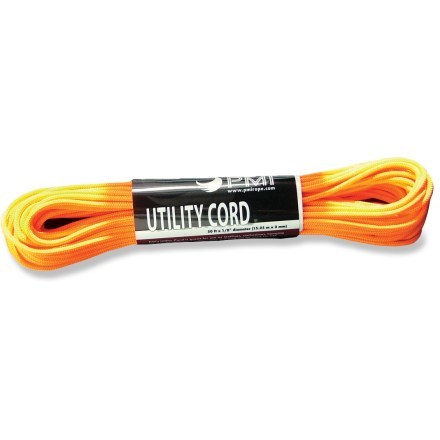
|
Pair this tarp with a few dollars of sturdy cord like this and you'll be set for creating an emergency shelter that doesn't take up lots of space or weight in your backpack. |
Trail tip:
If you hike with a trail buddy, human or canine, it's neighborly to offer them a dry place to sit, too. So buy a tarp with that generous 8' X 6' coverage (see tarp above).
It also makes a great floor lining for your backpacking tent, to keep grit controlled at doorways, and to reflect body heat back into your sleeping bag.
Three season tent options
The beauty of buying a three season tent is that you'll use it year round if your destinations take you to mild climates.
Or spring through mid fall in areas with heavy snowfall or extreme temperatures.
So explore your options for finding these tents here.
Or take a hard look at this little two person beauty at a good price point, the REI Co-op Trail Hut:
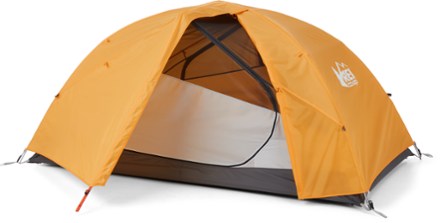
A few notes:
You'll want a footprint to give yourself an extra layer between the ground and the tent floor. This tent comes with its footprint, a nice perk.
Vestibules are really important to shield your backpack and footwear from the elements. They also make getting into a tent in blustery weather a bit nicer.
Illumination options
Shorter, possibly dim or foggy daylight hours work against you on fall hiking adventures.
Stumbling around on a slippery wet trail in the dark is asking for trouble, in so many ways.
If you have ignored the wisdom of the Ten Essentials, now is the time to add a headlamp to your backpack, and make sure it's got enough battery power (juice).
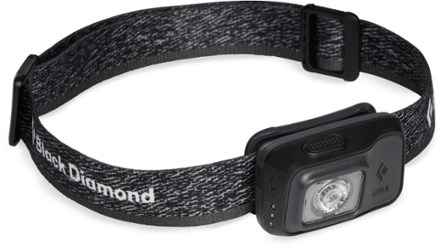
|
|
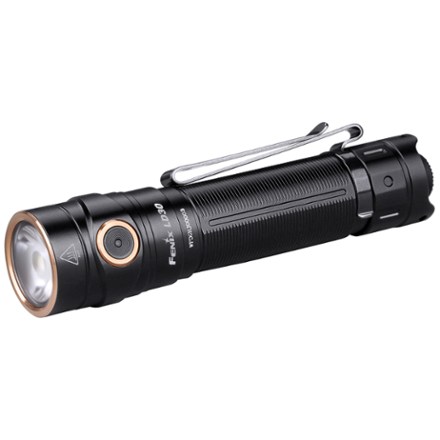
|
|
Fast hot water to warm you up
If you've never gotten really wet and cold on a windy, exposed hiking trail, you might be surprised at how quickly hypothermia can set in.
- Read about hypothermia so you can take appropriate action.
One way to keep your internal temperature in the ideal range is to consume hot beverages before and during your hike.
A lightweight, fast option to boil water is a Jetboil Flash.
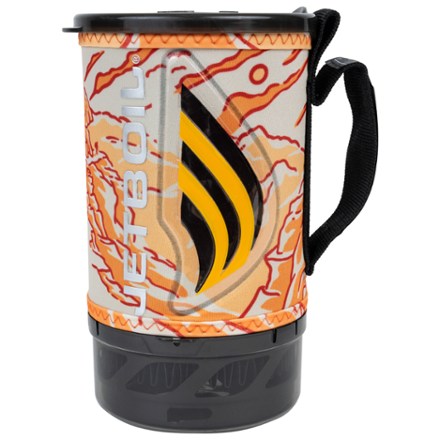
|
Not just for coffee!! They make it mighty easy to brew up a cup of anything, anywhere along the trail. Check out my favorite options for hiking teas! |
If you don't want to fiddle around with fuel, take the easy route to warding off hypothermia:
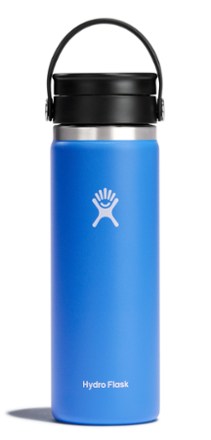
|
Fill up a Hydroflask insulated bottle with the hot beverage of your choice before you hit the trail, and enjoy a cuppa before you step away from your vehicle. Carry one in your backpack and impress your chill(ed) friends. Stash a bottle for when you return hours later, cold and damp and achy! |
- This holds a big 20 ounces for sharing your favorite hot trail beverage
Read my review Hydroflask review here.
More gear options in our
fall hiking clothing and gear guide
You can do even more to up your enjoyment of fall hiking trails.
And the best part about these recommendations conveniently pulled together into your fall hiking clothing and gear guide?
- You can re-purpose them for car camping, spring hiking, and travel plans.
Moisture proof, insulated sit spot
On a fall hike, you will lose body heat through your uncovered head and bare hands, but we've already got you covered with the recommendations above.
You will also lose body heat when sitting on the cold ground, or while perched on a handy but (wait for it) stone cold rock along the trail.
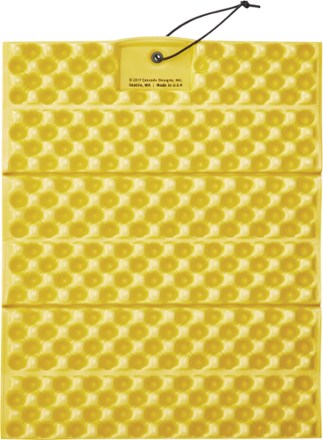 Therm-a-Rest Z-Seat Pad Therm-a-Rest Z-Seat Pad
|
Why not carry this cushion, and always know that you'll be comfortable when you sit or kneel down on a hike? Folds up tight for easy attachment to your backpack, too. Just a bit bigger than your water bottle, and oh so handy to have on a crisp fall hike. |
Weatherproof day hike backpack
for women hikers
Short fall days mean less trail time.
But the upside is that you can carry a smaller backpack on a day hike and still bring the Ten Essentials.
|
If you don't have a backpack with a rain cover that can stand up to the elements while providing space for your extra clothing and safety equipment, take a look at this beauty: REI Co-op Trail 25 Pack.
|
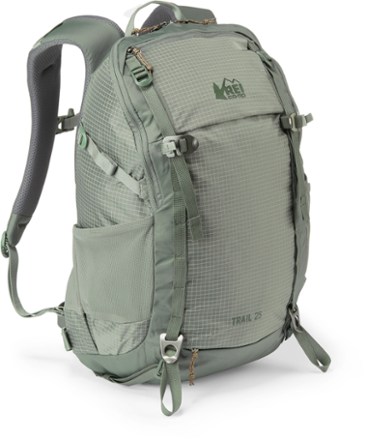
|
Fall hiking clothing and gear guide:
good tips on footwear
If you're a hiker who prefers the least amount of weight possible on your feet, the slick rocks on fall hiking trails might change your mind.
Your lightweight, minimalist trail shoes can't be expected to protect your ankles from rock abrasions or spattering mud, either.
And low cut footwear choices aren't going to stand up to full blown rain which turn the trail into a quagmire.
- Stealthy bottomless mud puddles awaiting your unsuspecting feet are the worst.
So I suggest that you consider these hiking footwear choices which have earned their spot in our fall hiking clothing and gear guide:
Thicker socks for fall hiking
If you've used only one pair of hiking socks through the summer season, consider a liner pair as an extra layer of insulation on your less-than-padded feet.
Cold feet slow you down and make you miserable, so add a thicker pair of outer socks, too.
Here's a combo I use for fall hiking:
Want to get really serious about dry feet on a soggy trail?
Use waterproof socks, like these Sealskinz mid length socks:
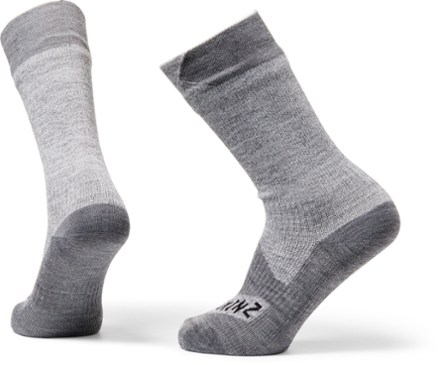
Fall hiking clothing and gear guide:
all wrapped up
The trustworthy recommendations and tips in this fall hiking clothing and gear guide hand you a neat and tidy trail map for safe, happy fall hiking.
- Also makes a handy gift guide when your loved ones ask how to support your fall (or anytime) hiking and camping habits ;)
This season earned its name because trail traffic will fall off to almost nothing as the weeks roll along.
So get out there and enjoy the silence and serenity.
But wear the best fall hiking clothes, and bulk up your Ten Essentials a bit, with the recommendations in this Fall Hiking Guide.
Pushing past fall hiking?
If you plan to extend your autumn hiking season into truly cold or wet (or both) weather, with its increased levels of risk, you'll need these detailed tips for safety and comfort:
Home page > Best Hiking Tips >
Fall Hiking Clothing And Gear Guide
|
I get emails all the time about what I wear, eat, carry and love to use on the trail. That's
why I provide affiliate links to you: the best gear that I use myself and have seen used by other hikers is instantly
available for your consideration, and the gear company sends a few
pennies per dollar to this reader-supported hiking website. There is no added cost to you! Everyone ends up a winner: Great gear for you, strong gear companies, and more free hiking tips for everyone. Thanks very much for your support. It's warmly and sincerely appreciated. It also helps send these hiking tips to all your virtual trail buddies around the globe. |
 |
